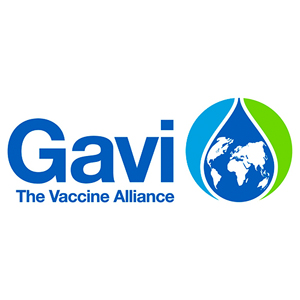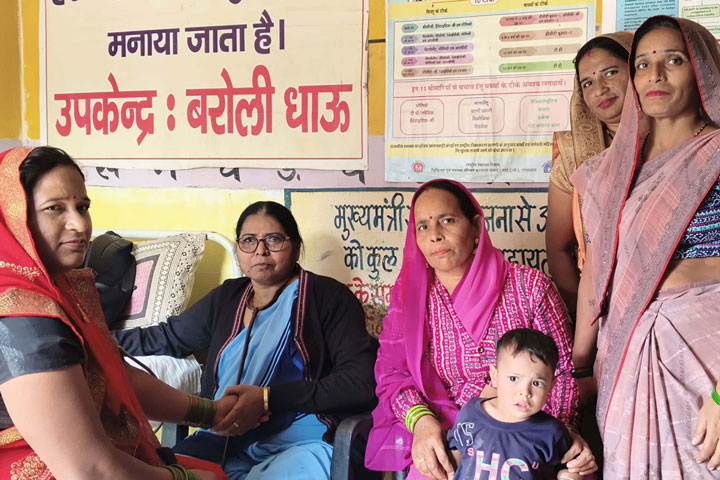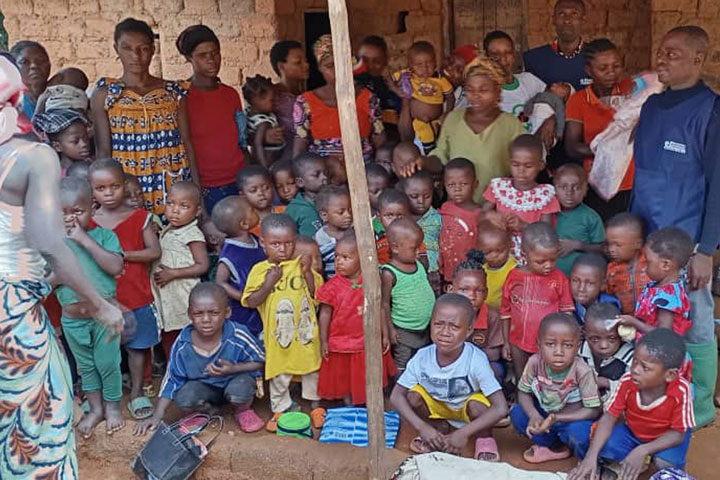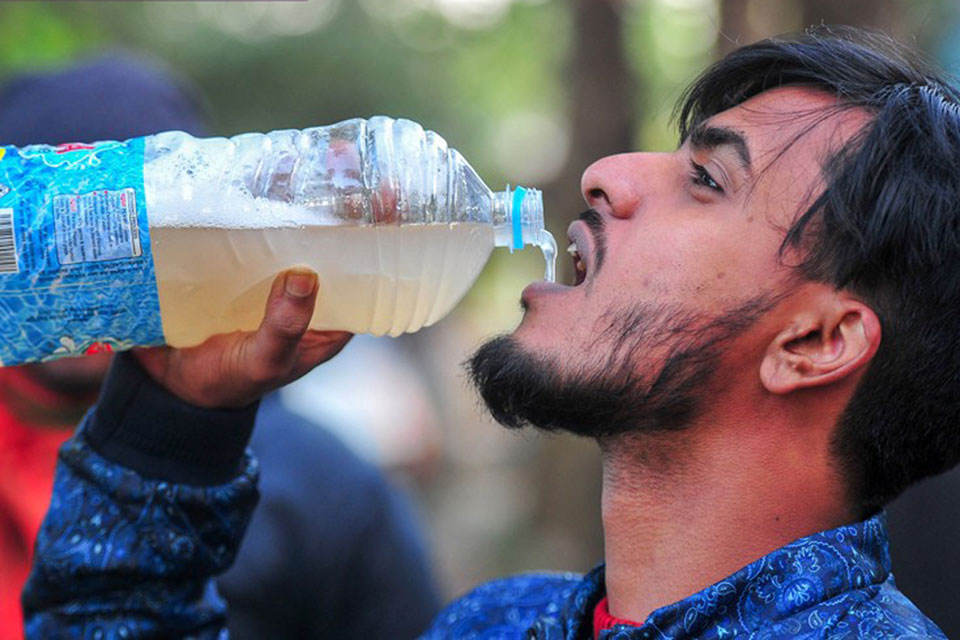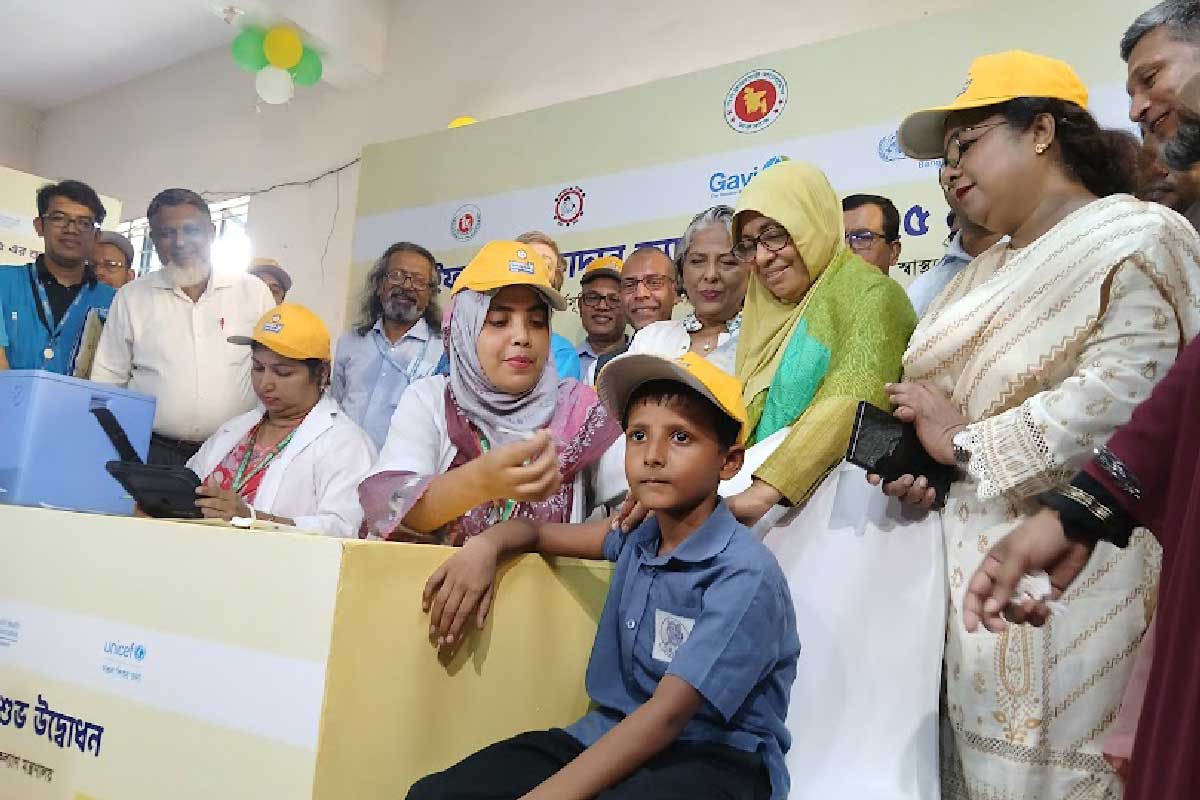Lois Privor-Dumm, Director of Policy Advocacy & Communication at International Vaccine Access Center (IVAC), and Huma Khawar, freelance journalist and consultant for Vaccine Implementation Technical Advisory Consortium (VITAC).
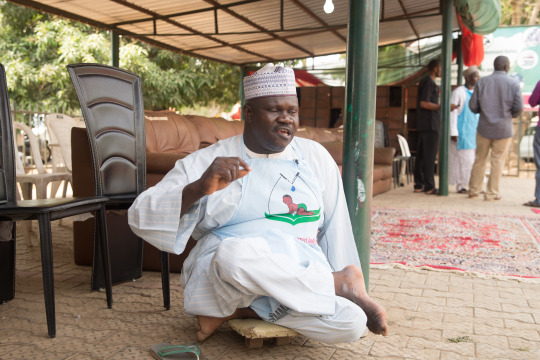
Misbau Lawan Didi doing his advocacy work. Photo: IVAC.
Misbau Lawan Didi leads a club he wants to close down. As President of the Polio Survivors Association, he is committed to not only end polio in Nigeria but to eradicate the disease from the planet. “We are determined to ensure that our members are no more” he says.
In Nigeria and around the world, citizens, governments, doctors, and parents are fighting polio – and they’re winning. After nearly 30 years of polio eradication efforts, the end is in sight. In 1988, when the World Health Assembly (WHA) resolved to eradicate polio, there were an estimated 350,000 polio cases globally; last year there were only 359, and this year cases so far are down by 75%.
Polio has eluded us for decades, involving plenty of false stops and starts, and lots of excitement.
So what makes this time different?
Communities around the world are mobilizing, and momentum is building. Last month, one of the remaining three endemic countries, Nigeria, passed the one year mark without a single case of wild poliovirus. Once the final samples are tested and cleared, the World Health Organization should even be able to declare Nigeria a non-endemic country. Many thought it wouldn’t happen.
Now, another endemic country, Pakistan, is embarking on an important step in its fight against polio, introducing the inactivated polio vaccine (IPV) across the country – a critical part of the polio endgame strategy. With a decentralized health system, years of war, and continued threats against health workers, this will take determination and sustained effort.
Step by step, progress is being made. We are on the brink of an unprecedented accomplishment. Yet, public health experts warn “the last mile” will be the hardest. Ending transmission of the virus in every country will take a focused effort and the use of every available tool against the disease. The Polio Eradication and Endgame Strategic Plan was developed to provide countries with a roadmap to help navigate this challenge. The plan calls on countries to make three important changes to their immunization efforts:
1) to introduce one dose of (IPV) into routine immunization schedules
2) to strengthen routine immunization
3) to withdraw oral polio vaccine (OPV).
The first phase of this plan, the introduction of IPV, is well underway. While there was initial concern over an accelerated timeline, communities and governments around the world have risen to the challenge. The introduction of IPV will be one of the fastest rollouts in history. Out of 126 countries using oral polio vaccine (OPV), 30 have now introduced the inactivated vaccine. Today, on August 20th, Pakistan launches its nationwide rollout, which is no small feat. The significance of this rollout is monumental.

Photo: UNICEF/PAK 2015/Asad Zaidi
Introducing a new vaccine involves hundreds of technical and logistical details. There are budget considerations, procurement, storage and transport of vaccines, training of health workers, and communication with parents. Countries need to assess and strengthen their systems. In Nigeria, where skepticism about the polio vaccine has thwarted previous efforts, communicating with the public was particularly important. When Nigeria introduced the new polio vaccine in February of this year, community and religious leaders were active in the outreach to parents. In markets and in mosques, the public was told about the importance of immunization and using the IPV vaccine in the battle against polio. As a result, in February, when Nigeria became the first polio endemic country to introduce the vaccine, it was widely accepted by parents.
We are now down to the last three polio endemic countries – Nigeria, Pakistan and Afghanistan – and there are encouraging signs of progress. Last year, there were no new members of Nigeria’s Polio Survivors Association as the country experienced no cases of the disease. Work in Nigeria is far from over, but the effort is paying off: two more years without a reported case and Nigeria can be certified as polio free.
The same can be true in Pakistan and the other countries where communities are hard at work to protect their children and eradicate this virus. This time it really can be different. Pakistan, is your time now?
With the help of a long list of partners and supporters, the International Vaccine Access Center (IVAC) has developed a portfolio of advocacy materials supporting IPV introduction, which can be found here. Inquiries can be directed to Lois Privor-Dumm at lprivor1[at]jhu.edu.
